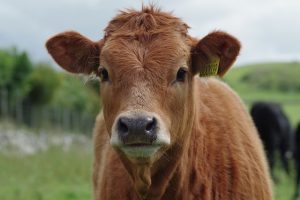By NewsDesk @bactiman63
In Brazil, the Agricultural Defense Secretariat of the Ministry of Agriculture, Livestock and Supply reports (computer translated) the confirmation of an atypical case of Bovine Spongiform Encephalopathy (BSE), or Mad Cow disease, in Mato Grosso.

This disease occurs spontaneously and sporadically, and is not related to the ingestion of contaminated food.
It was found in a 17 year old beef cow. All BSE-specific risk material was removed from the animal during emergency slaughter and incinerated at the slaughterhouse itself. Other products derived from the animal were identified, located and seized preventively, with no product entering the human food chain or ruminants. There is therefore no risk to the population.
The Map and the Institute of Agricultural Defense of Mato Grosso (INDEA / MT) immediately initiated field investigations, with the prohibition of ownership of origin. All sanitary risk mitigation actions were completed prior to the final outcome being issued by the World Organization for Animal Health (OIE) reference laboratory. Following confirmation on Friday (31), Brazil officially notified the OIE and importing countries, as provided by international standards.
According to OIE standards, there will be no change in Brazil’s risk classification for the disease, which will remain as insignificant country of risk, the best possible for BSE. In more than 20 years of surveillance for the disease, Brazil recorded only three cases of atypical BSE and no cases of classical BSE.
BSE is not contagious and exists in two types – classical and atypical. Classical BSE is the form that occurred primarily in the United Kingdom, beginning in the late 1980’s, and it has been linked to variant Creutzfeldt-Jakob disease (vCJD) in people. The primary source of infection for classical BSE is feed contaminated with the infectious prion agent, such as meat-and-bone meal containing protein derived from rendered infected cattle.
Atypical BSE is different, and it generally occurs in older cattle, usually 8 years of age or greater. It seems to arise rarely and spontaneously in all cattle populations.
BSE is a progressive neurological disease of cattle caused by prions, which are infectious agents made up of protein material. The prion proteins affect the brain structure of infected animals, causing the animal to lose motor skills and eventually causing death. Clinical signs include behavioral changes, coordination problems, weight loss and decreased milk production. Once clinical signs appear, the animal’s condition deteriorates until it either dies or is euthanized.
Honduras dengue epidemic tops 8,000
World Chagas Day approved by World Health Assembly
Malaria-free: Argentina and Algeria certified by WHO
Brazil: 1st human rabies case reported in Santa Catarina in nearly 40 years


One thought on “Mad Cow disease detected in Mato Grosso beef cow”